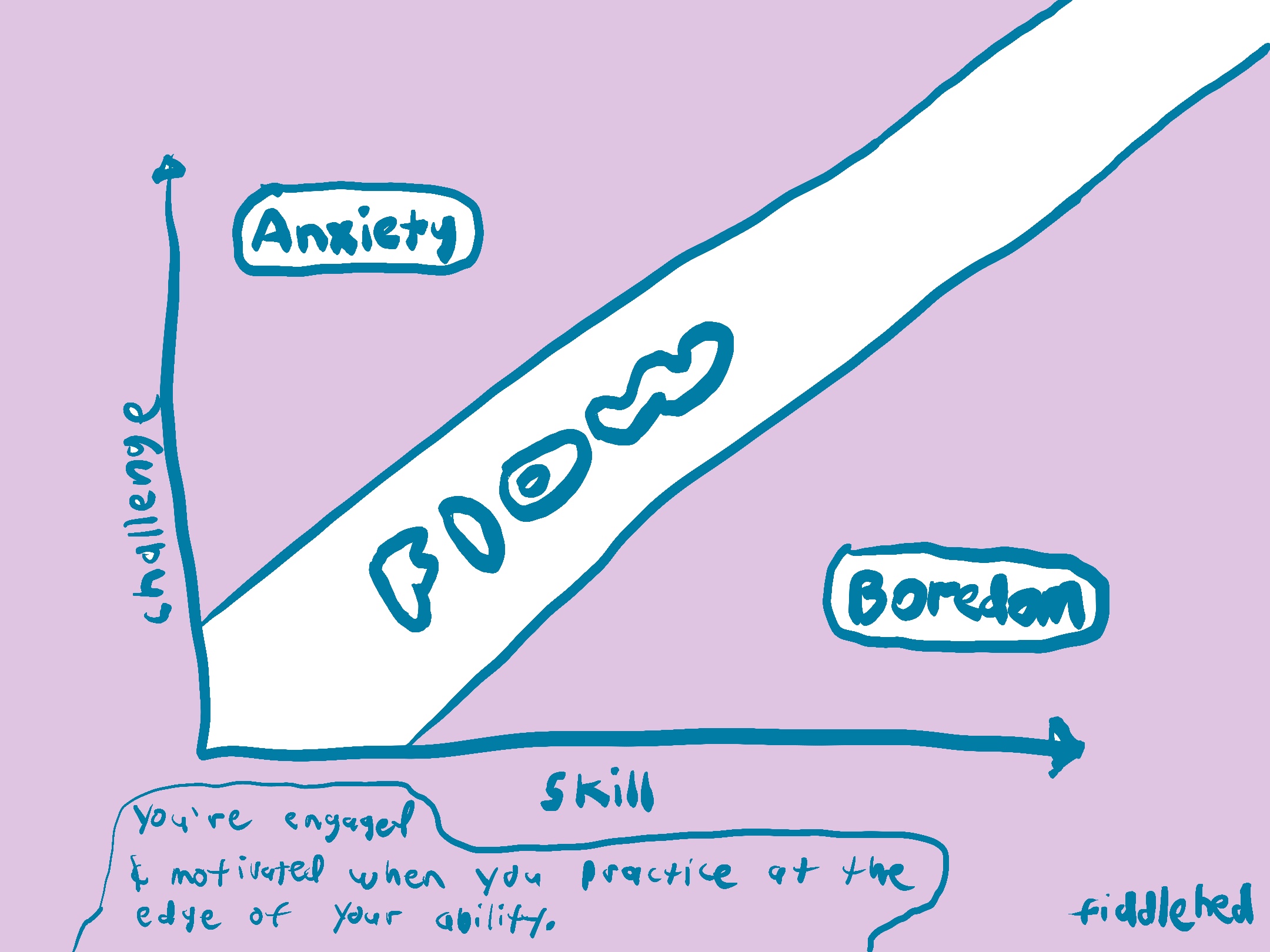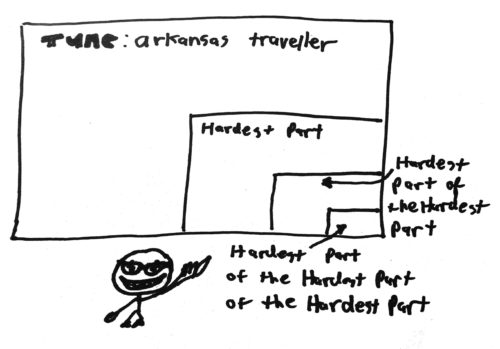You can learn an instrument (or anything) if you simply ask yourself, “What is the hardest part?” Once you identify that, practice it. Then once again ask, “What is the hardest part?” (of the hardest part).
Keep going until you find you’re practicing something with the perfect level of challenge.
You’re deeply engaged when you work at your edge. It’s like playing the best video game ever. You’re hooked when you experience slightly more successes than failures.

This is where the peak experience of flow happens. It’s what keeps you going.
If you have rewarding practice experiences like this on a daily basis, then you don’t need external motivation. At this point, instead of saying, I really should practice today…” you say, “I can’t wait to practice today!”
Let’s practice
Do you notice that you struggle with new tunes? If the answer is yes, can you say what in particular is the hardest part of the tune? If yes, have you taken the time to just practice the hard part?
Maybe for you, the hardest part of the A part to Arkansas Traveller is the fourth quarter of the B part:
A3-2-3-0-1-3-0-D3-2-0-1-2-0-0
Have you taken the time to just practice this? If so, have you found that there is a hardest part within that hardest part? Perhaps it’s this four-note piece:
A1-3-0-D3
We could continue this way and find the hardest parts within this hardest part (which is within an even larger hardest part; the fourth quarter of the A part). Breaking it down further, we could practice:
A1-3
A0-D3
It might seem ridiculous, but you could get even more microscopic with it! Maybe you just need to practice A3 until it’s solid, relaxed and as natural as your breathing. Maybe if you completely befriend this note, then A1-3 and A0-D3 will suddenly be a whole lot easier. And if you master those two intervals, then A1-3-0-D3 might just fall into place.
The idea is, that if you keep cranking up the power of the microscope and paying attention along the way, eventually the hardest part will evaporate, and you’ll be able to play the tune with more flow.
This is the “Powers of ten” approach to practice.
Though at first it might seem tedious, if you practice this way it becomes interesting and creative. You may come up with novel solutions to the various problems. Or, you may end up writing your own tune if you take this nuts-and-bolts approach.
You can also use this approach when approaching other things besides tunes. For example, maybe double stops are hard for you. Try to find out what exactly is hard. Start with open string double stops. Which is harder, D0A0 or A0E0? For a lot of people it’s A0E0. The next step would be to focus on just that double stops. You may find that the real trouble note is actually E0, and so you could focus on just playing the open E string in a relaxed and flowing manner. This might dramatically improve the A0E0 double stop. Learn more about this in this lesson: Are you struggling with double stops?
The overall goal: improve your sound. Practicing the hardest parts will help with these four elements of your sound:
- Tuning
- Timing
- Tone
- Flow
Learn more in this article on Micro-practice And Macro-practice.
Also check out this webinar video with notes on How To Improve Your Sound.
Nice one. Now go fiddle with it.


Thank you so much!!!!! This helps me tremendously!!!!!
You Rock!
Excellent suggestions. I’m doing micro practice but double stops give me a bad time,Especially fingered double stops. One finger always seems to get in the way.